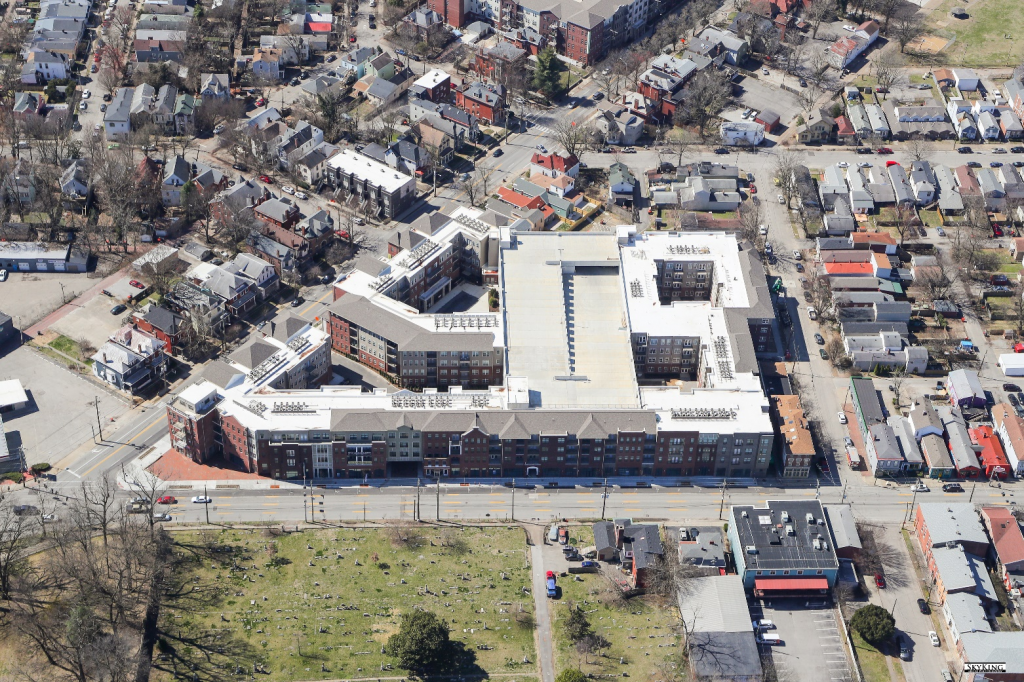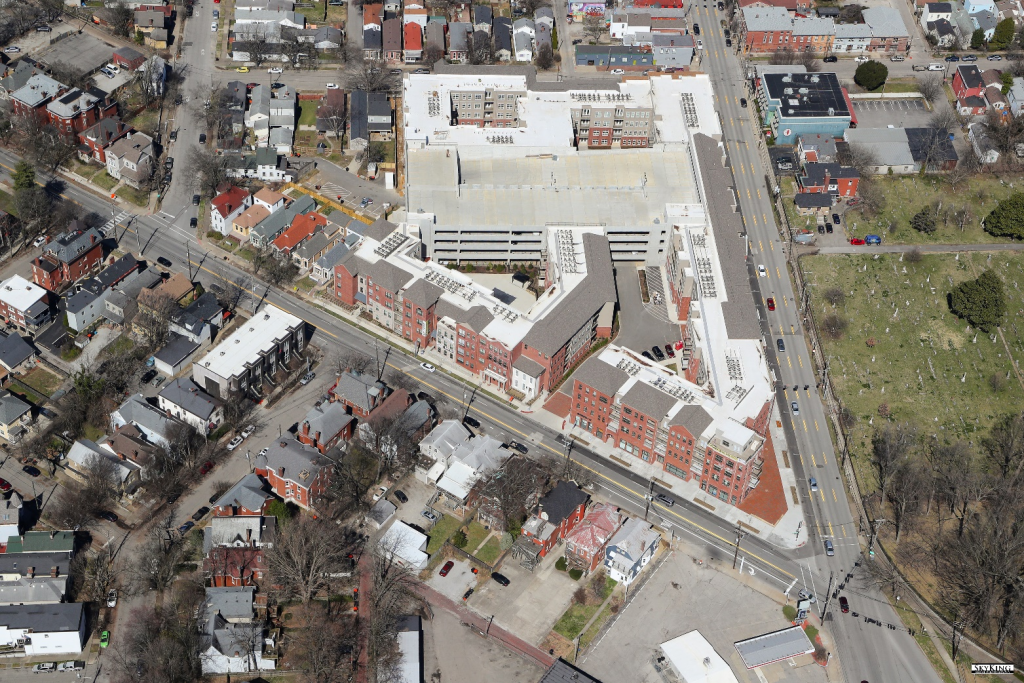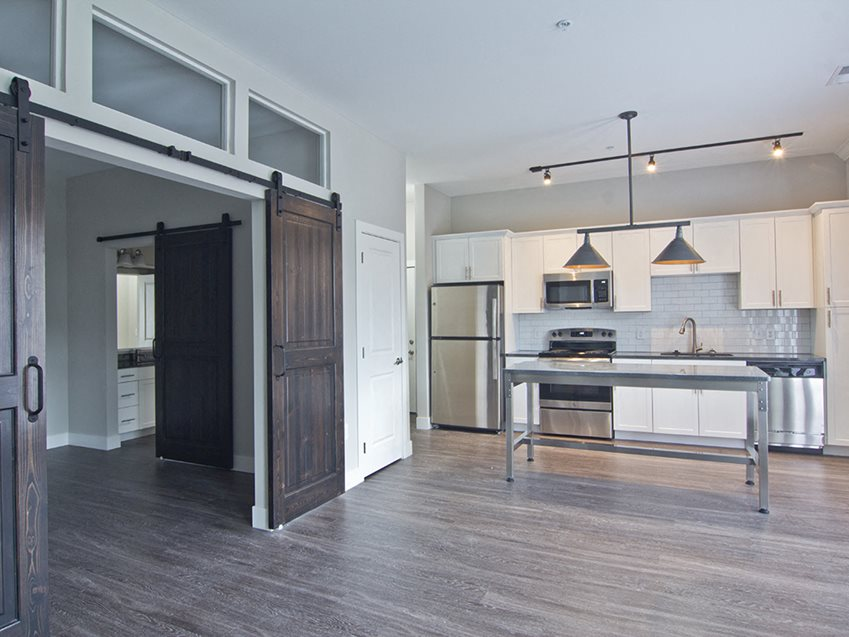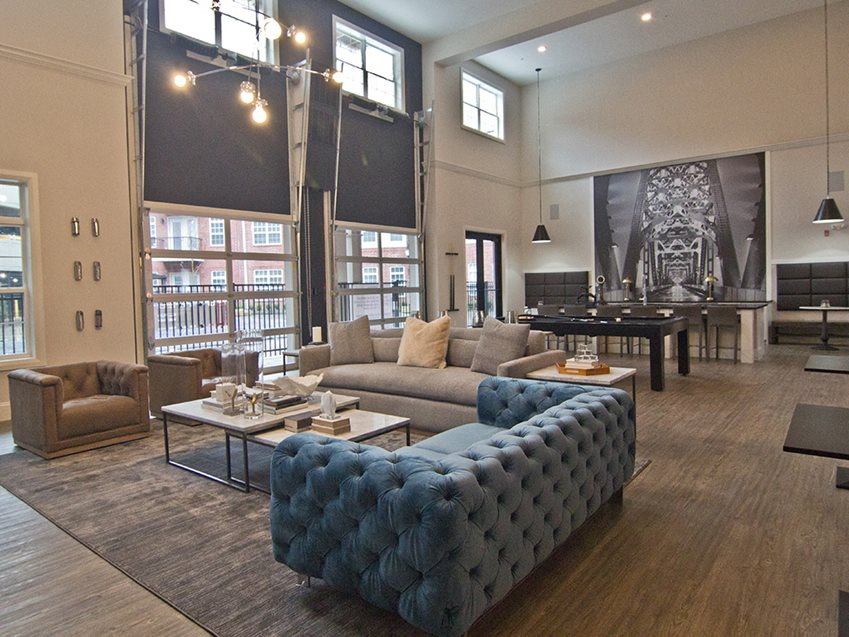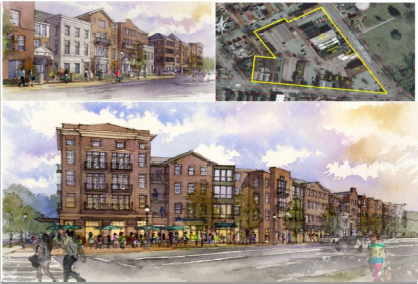
Like many of the nation’s river cities, Louisville is rich with charm and historical, architectural context. With many of its homes and buildings dating from the 1850s to the early 1900s, the City is adorned with Italianate, Victorian Gothic, Renaissance Revival, Beaux Arts, Chateauesque, Queen Anne, and Romanesque period architecture. These characteristics are most prevalent within those neighborhoods closest to the river, which in this case includes the City center and surrounding neighborhoods predominantly to the east and south.
The Baxter is the result of several years of mining the city for off-market opportunities in the vicinity of the Bardstown Corridor. The project represents 34 separate parcels of property across four unique property owners. Fortunately, two of the owners accounted for roughly 80% of the assemblage; however, two keystone pieces along Baxter Avenue were necessary acquisitions for the project feasibility. These two owners had operated businesses at the location for 20 and 50 plus years, respectively. Although both would ultimately agree to sell and wanted to see the project happen, each required relocation and moving allowances among other difficult contract terms.
Ultimately, the project (rezone and variances) and local TIF were approved by METRO. In finalizing its plans, the developer agreed to donate five houses (those furthest west along Broadway) to a not-for profit. This group would rehab the homes, which were all in disrepair, and seek historical landmark designations. Profits from the sale of those homes will be recycled into future historical landmarking efforts. Further, the developer preserved the façade of a late 1800’s Italianate architecture on Broadway, along with the façade of a turn-of-the-century commercial building on Baxter. Both facades were incorporated into the architectural character of the elevations. Ultimately, all neighborhoods surrounding the project were excited about the approved project, and eager to see it completed.
Working closely with local counsel and one of METRO’s required consultants, a Development Area TIF was created, securing a 20-year local, non-school TIF which must be split with the municipality 80/20. The TIF was set to average 80/20, while maximizing the present value dollars of the tax savings, equal to $5.0 million in total. Because of the donation of historical homes, no inclusionary housing initiatives were sought or included within the project, although they were discussed at length.
The Baxter has achieved stabilized occupancy and is now home to several thriving retail tenants including Hi-Wire Brewing and Goodfellas Pizza.
